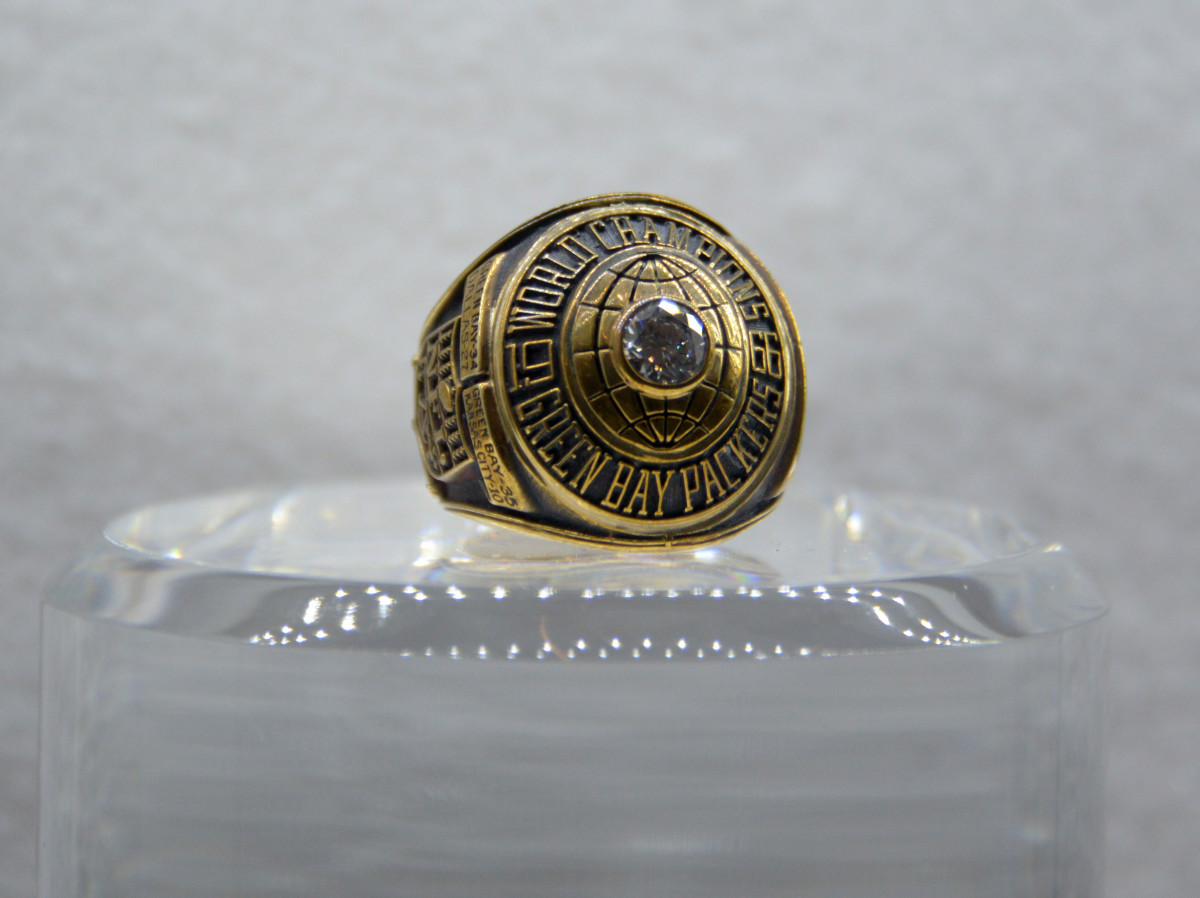Starr, Not Brady, Remains at NFL Playoffs Summit
GREEN BAY, Wis. – Tom Brady is hailed as the greatest quarterback in NFL history. It’s impossible to argue against it. He’s won seven Super Bowls, is No. 1 in NFL history in yards, touchdowns and completions in regular-season play, and has practically lapped the field in the playoffs.
But don’t forget about Bart Starr, the leader of the Glory Years Green Bay Packers teams that won five championships in a span of seven seasons.
With the 2021 NFL playoffs set to begin on Saturday, it’s Starr who remains the all-time leader in postseason passer rating. In fashioning a 9-1 record on the strength of 15 touchdowns vs. three interceptions, Starr amassed a rating of 104.8.
Among quarterbacks with at least 120 postseason passing attempts, only five have a rating of greater than 100: Starr, Kurt Warner (102.8), Matt Ryan (100.8), Aaron Rodgers (100.5) and Patrick Mahomes (100.4). What about Brady? A distant 18th with a mark of 90.4.
Two factors weigh heavily in Starr’s favor as the greatest postseason quarterback in NFL history.
First, it’s the level of competition. To be sure, the caliber of player is better in today’s NFL. Rather, it’s competition relative to the era. There were no wild-card cupcakes to feast upon during Starr’s time, like Brady will face against the 9-8 Eagles on Sunday. During most of Starr’s career, there was one playoff game – the NFL Championship Game. It was a best-vs.-best, winner-takes-all game. It wasn’t until the 1967 season when the NFL expanded to a four-team playoff, meaning divisional playoffs, NFL Championship and Super Bowl against the winner of the upstart AFL.
Second and most importantly, it’s simply the changing of the game. The NFL has never been more quarterback-friendly. That’s evident in passer ratings, which have risen steadily over the years. In 1966, when Starr won his one and only NFL MVP, his passer rating was a then-record 105.0. The median passer rating in the 15-team league was 64.9, meaning Starr was plus-40.1 vs. his peers.
The median postseason passer rating for quarterbacks in the 1960s was 59.3. Starr’s career rating beat that by 45.5 points. Heck, of the 20 quarterbacks during that decade who threw 30 playoff passes, Starr’s passer rating was 23.3 points better than second-ranked Daryle Lamonica. Starr was plus-12 on touchdowns to interceptions. Everyone else combined was minus-36.
Brady has been magnificent but, comparing era vs. era, he doesn’t hold a handle to Starr’s dominance during a period in which receivers could be manhandled and quarterbacks weren’t afforded the security provided by today’s kinder, gentler rules. Six decades ago, quarterbacks were treated like any other player. As the late Raiders owner and coach Al Davis famously said, “The quarterback must go down and must go down hard.” Forget that. Nowadays, they can’t be hit low, they can’t be hit high, they can’t be hit late and they certainly can’t be hit hard. That Starr dominated like he did considering the brutal style of play of yesteryear is remarkable.
Of 95 quarterbacks with at least 120 playoff passing attacks, Starr’s 5-to-1 touchdown-to-interception ratio that trails only Alex Smith’s 7-to-1 (14 touchdowns, two interceptions) and his 8.23 yards per passing attempt ranks seventh. One of the ultimate winners in NFL history, his 9-1 record and .900 winning percentage is the best of all-time.
None of this is meant to ding Brady’s legendary resume. To win the three or four postseason games necessary to win even one Super Bowl is an incredible accomplishment. To do that seven times is an amazing feat that might never be matched. To be playing at his elite level at age 44 makes him worthy of the tired and overused GOAT moniker. While Rodgers seems poised to win his fourth MVP – one more than Brady – there’s no doubt that Brady remains the most feared player in the league.
But let’s not forget Starr, the man who was super before there was a Super Bowl, the man who dominated big moments like Brady a decade before Brady was born.
Super Bowl I Photos
The Green Bay Packers beat the Kansas City Chiefs 35-10 in the first Super Bowl, played on Jan. 15, 1967.
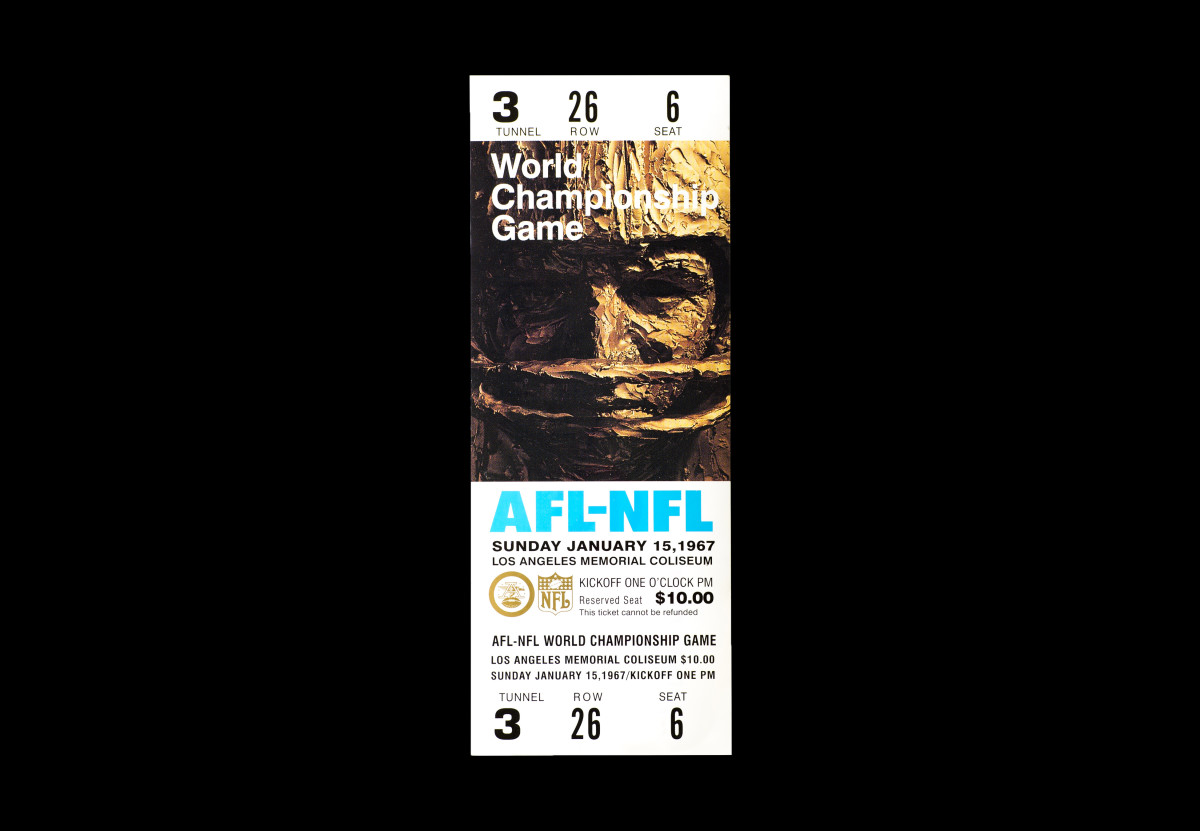
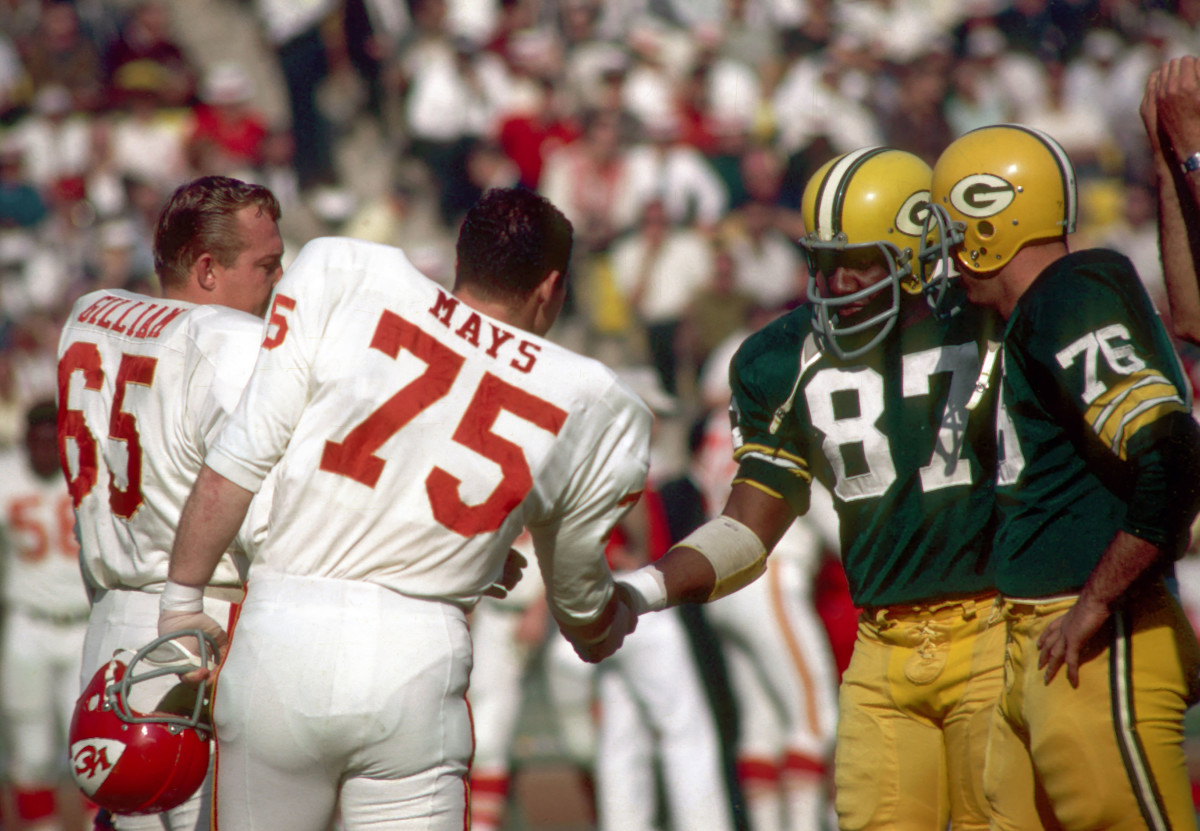
Kansas City Chiefs defensive end (75) JERRY MAYS shakes hands with Green Bay Packers defensive end (87) WILLIE DAVIS as the captains meet at midfield before the start of Super Bowl I. Tony Tomsic-USA TODAY NETWORK
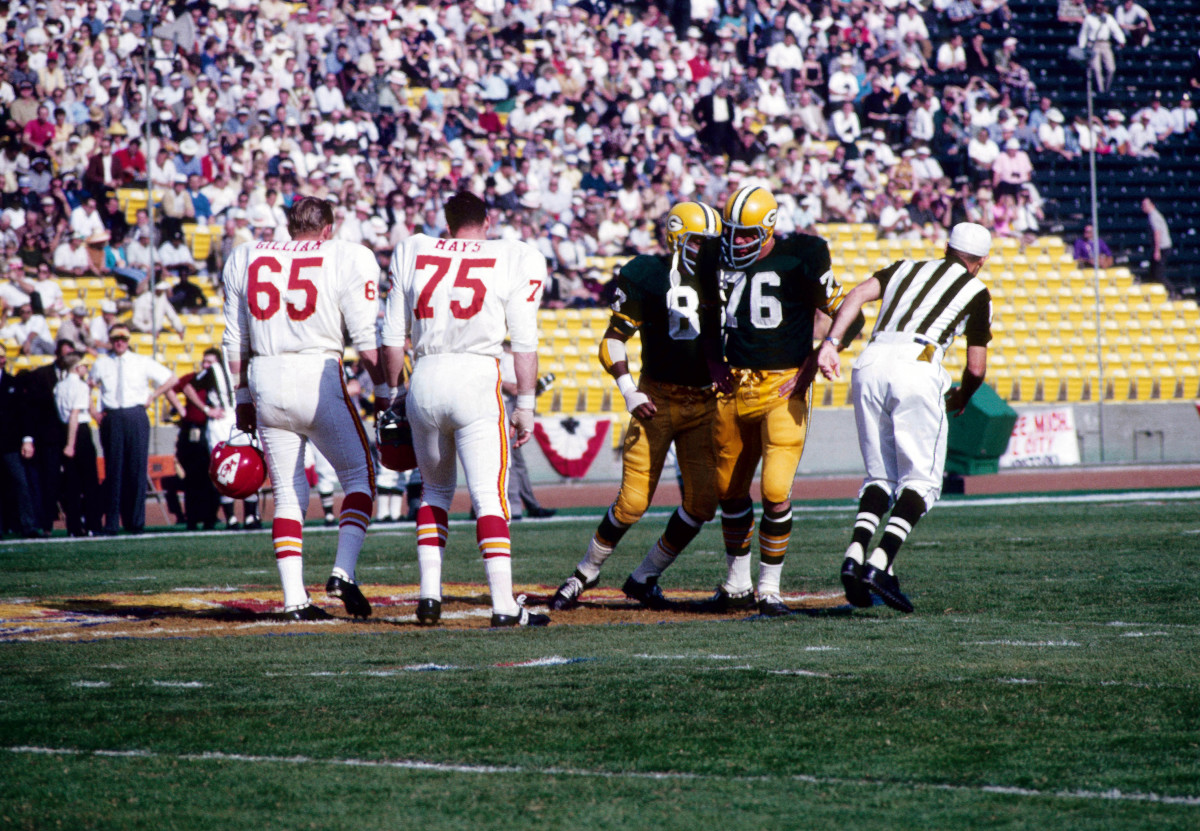
Green Bay Packers defensive end (87 Willie Davis and tackle (76) Bob Skoronski meet Kansas City Chiefs (75) Jerry Mays and (65) Jon Gilliam for the coin toss prior to the start of Super Bowl I at The Coliseum. The Packers defeated the Chiefs 35-10 to win the first meeting of the AFL versus the NFL for the world championship. hoto By Malcolm Emmons- USA TODAY Sports © Copyright Malcolm Emmons
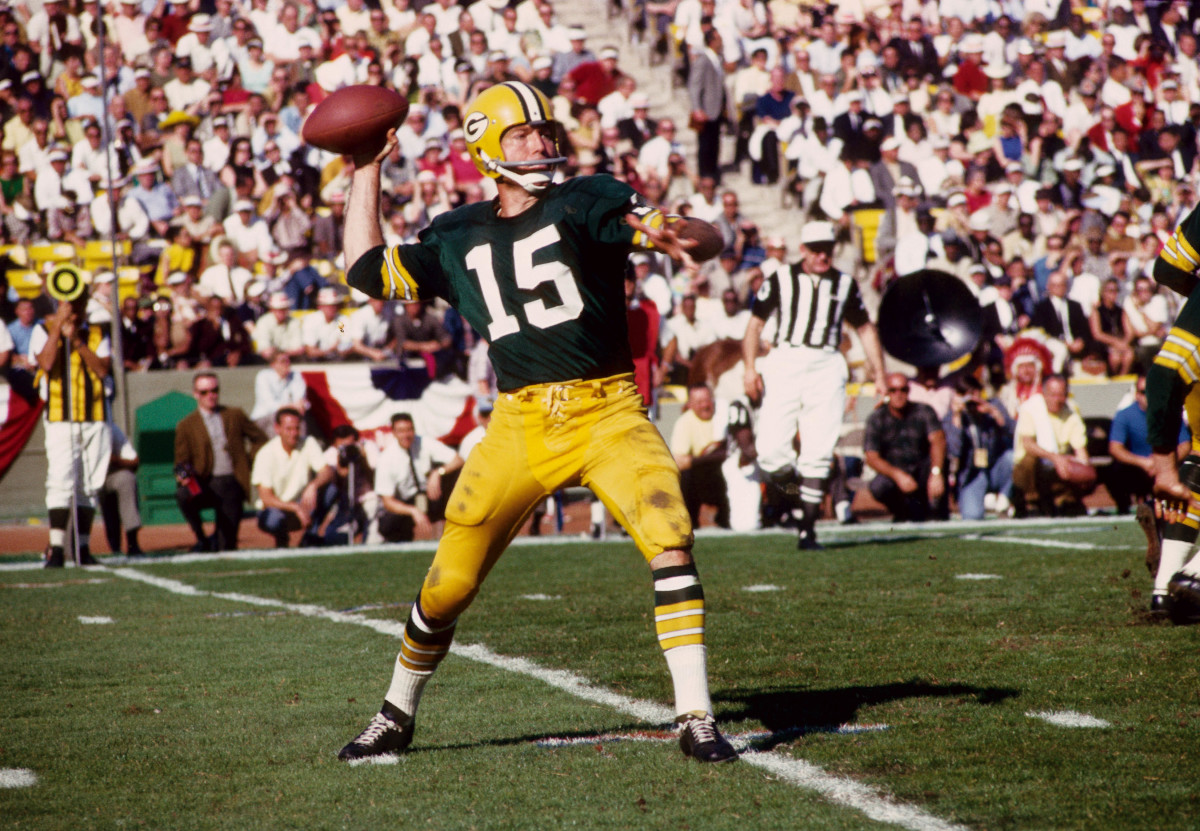
Bart Starr gets ready to throw a pass during Super Bowl I. His career passer rating in the playoffs ranks No. 1 all-time.
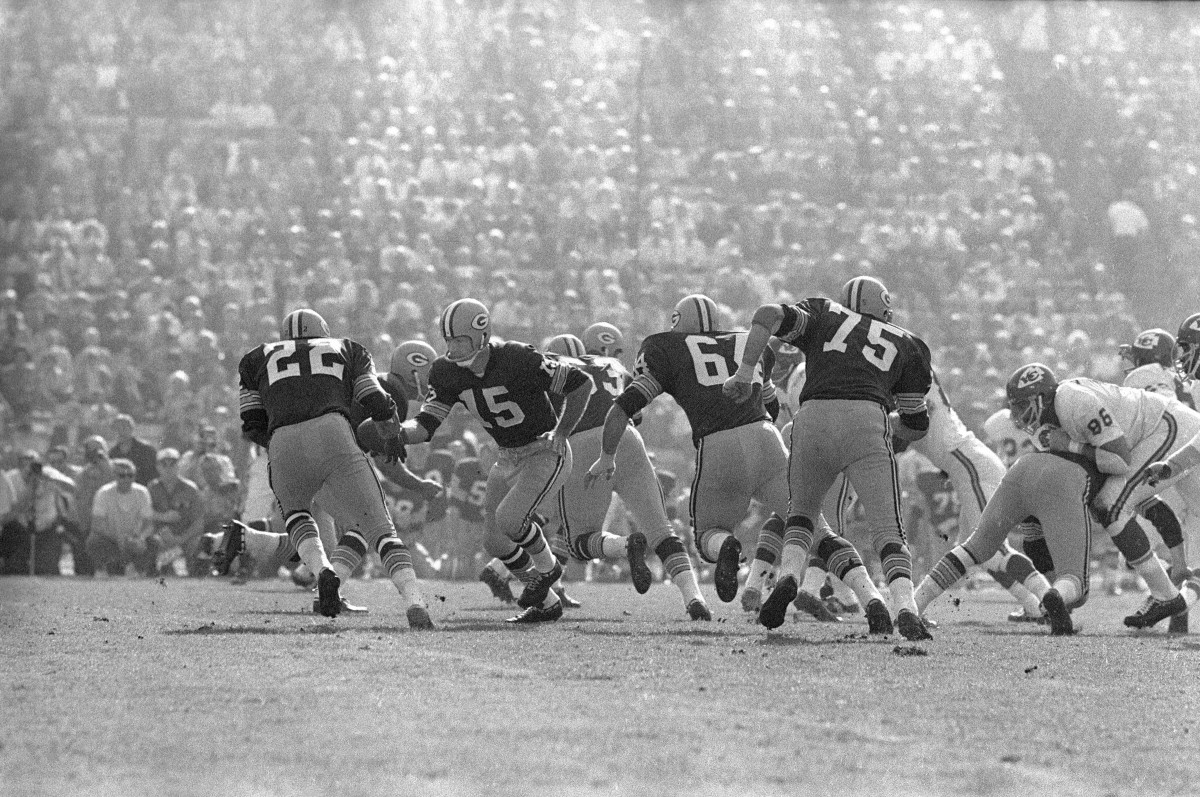
Green Bay Packers quarterback Bart Starr (15) hands off to running back Elijah Pitts (22) who is led on the power sweep by linemen Fuzzy Thurston (63), Jerry Kramer (64), and Forrest Gregg (75) against the Kansas City Chiefs during Super Bowl I at the Los Angeles Coliseum. Rod Hanna-USA TODAY Sports
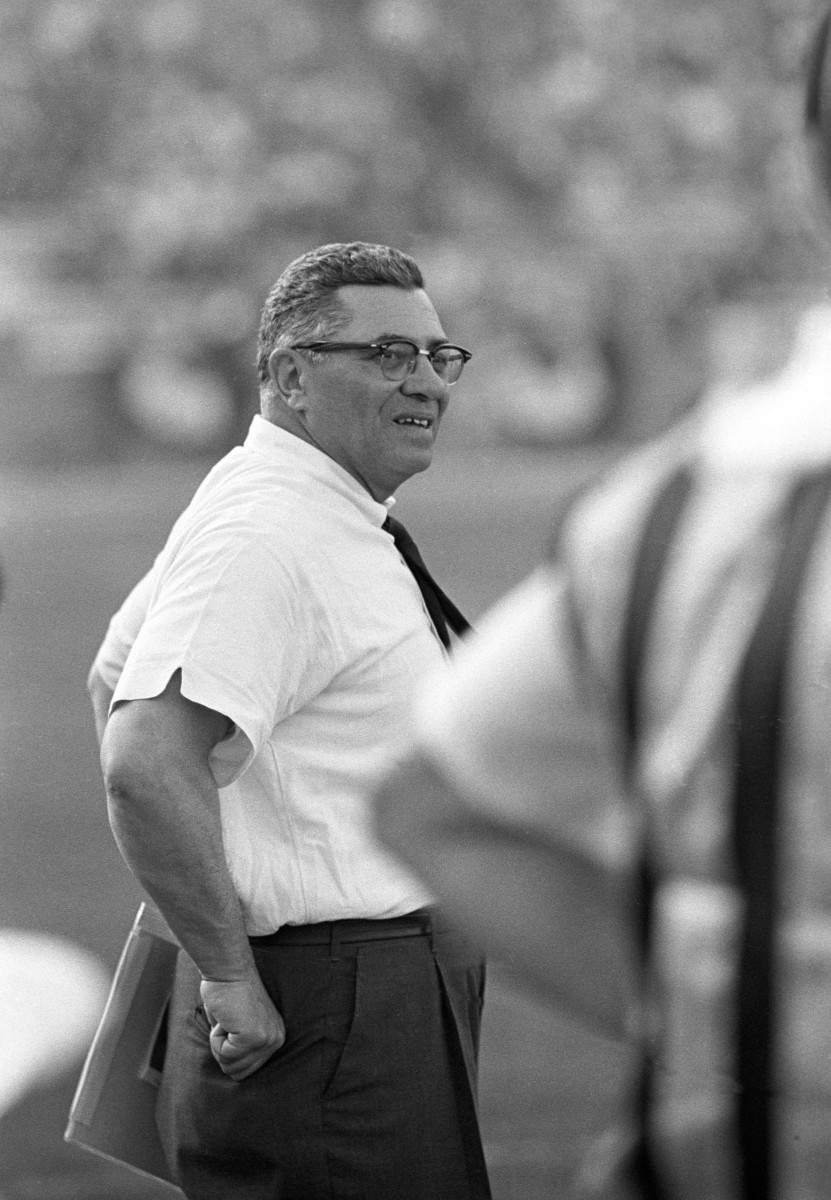
Vince Lombardi led the Packers to victory in the first Super Bowl. Rod Hanna-USA TODAY Sports
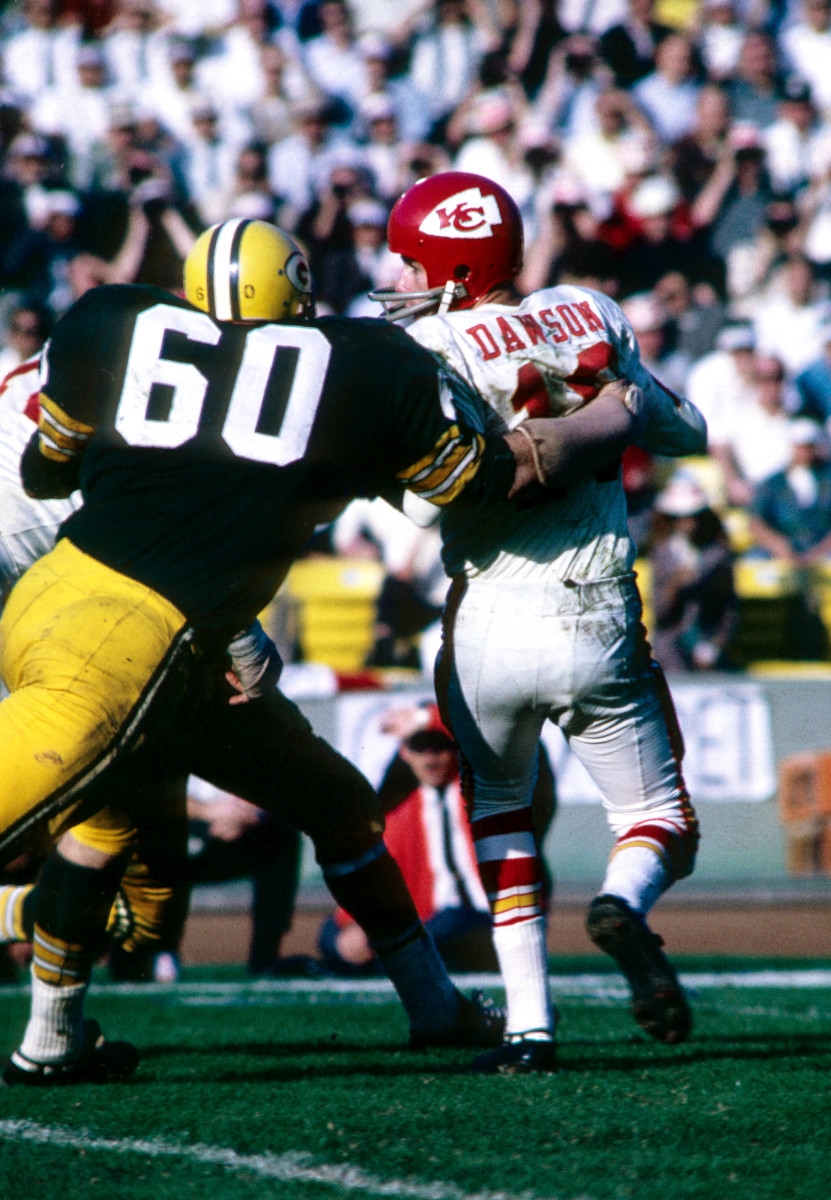
Kansas City Chiefs quarterback (16) Len Dawson is hit by Green Bay Packers linebacker (60) Lee Roy Caffey during Super Bowl I. Photo By Malcolm Emmons- USA TODAY Sports © Copyright Malcolm Emmons
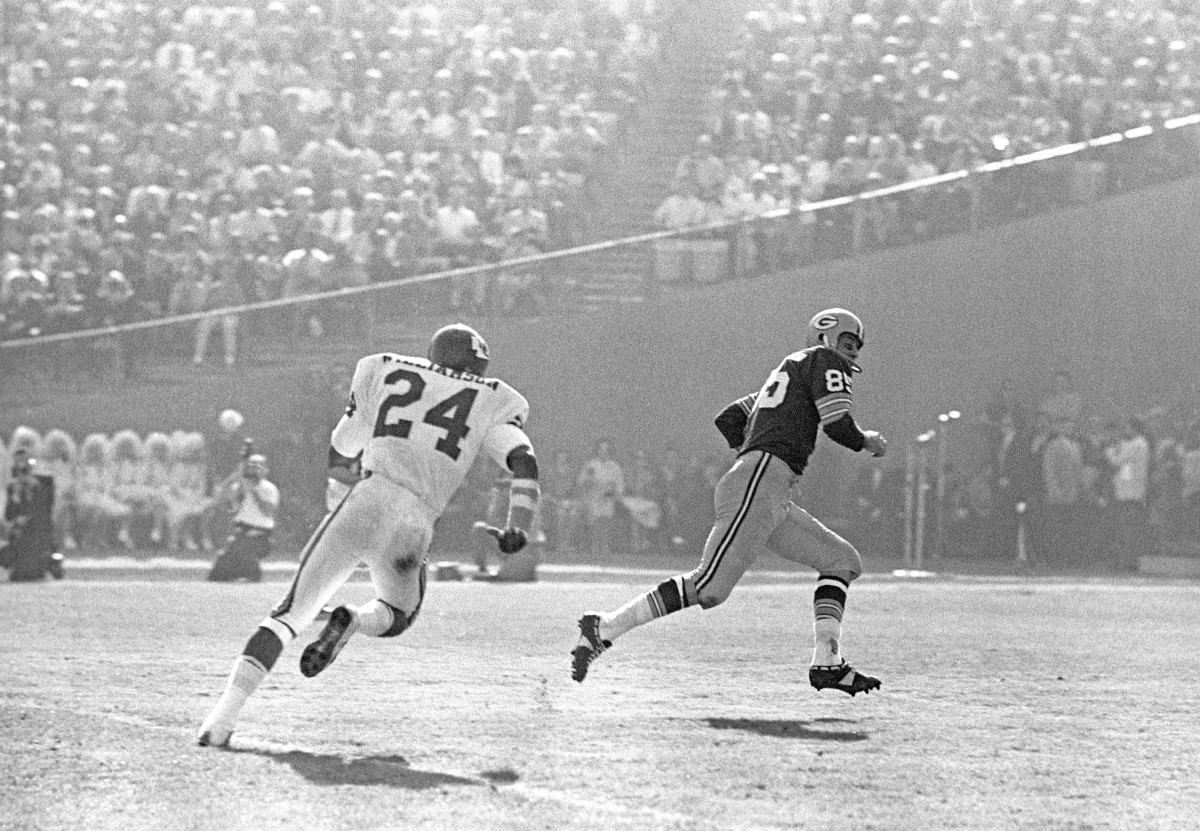
Green Bay Packers wide receiver Max McGee (85) runs for a touchdown as Kansas City Chiefs cornerback Fred Williamson (24) gives chase during Super Bowl I. The 37-yard, one-handed catch was the first touchdown in Super Bowl history. Photo bu Rod Hanna-USA TODAY Sports
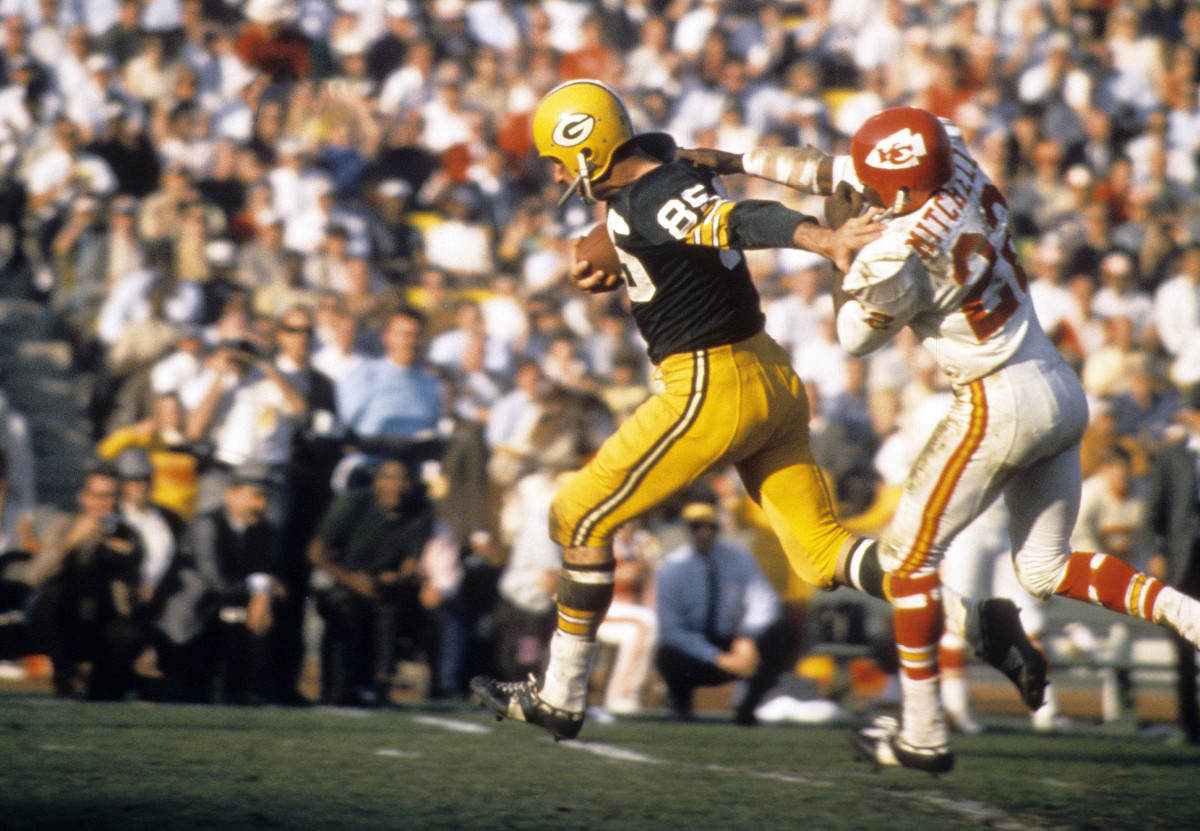
Green Bay Packers receiver Max McGee (85) runs past Kansas City Chiefs defensive back Willie Mitchell (22) in Super Bowl I. Darryl Norenberg-USA TODAY Sports
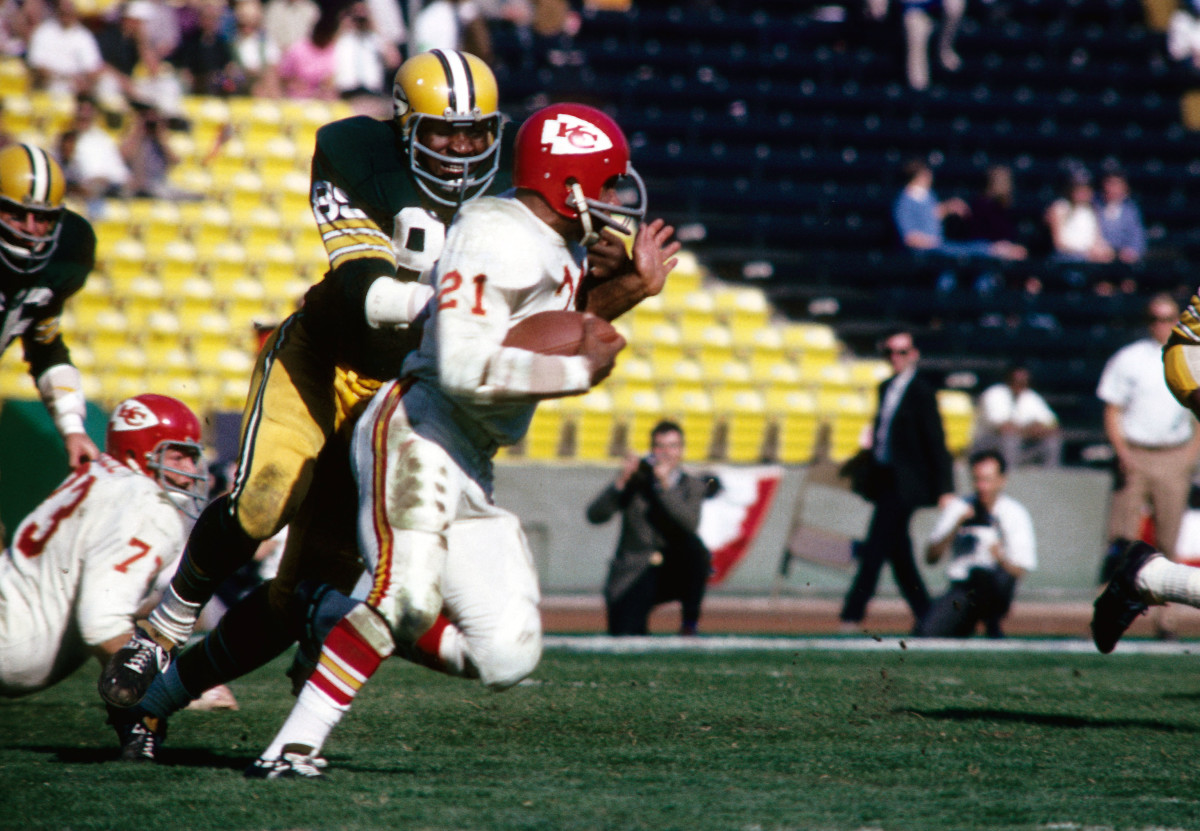
Green Bay Packers linebacker (89) Dave Robinson chases Kansas City Chiefs running back (21) Mike Garrett during Super Bowl I. Photo By Malcolm Emmons- USA TODAY Sports
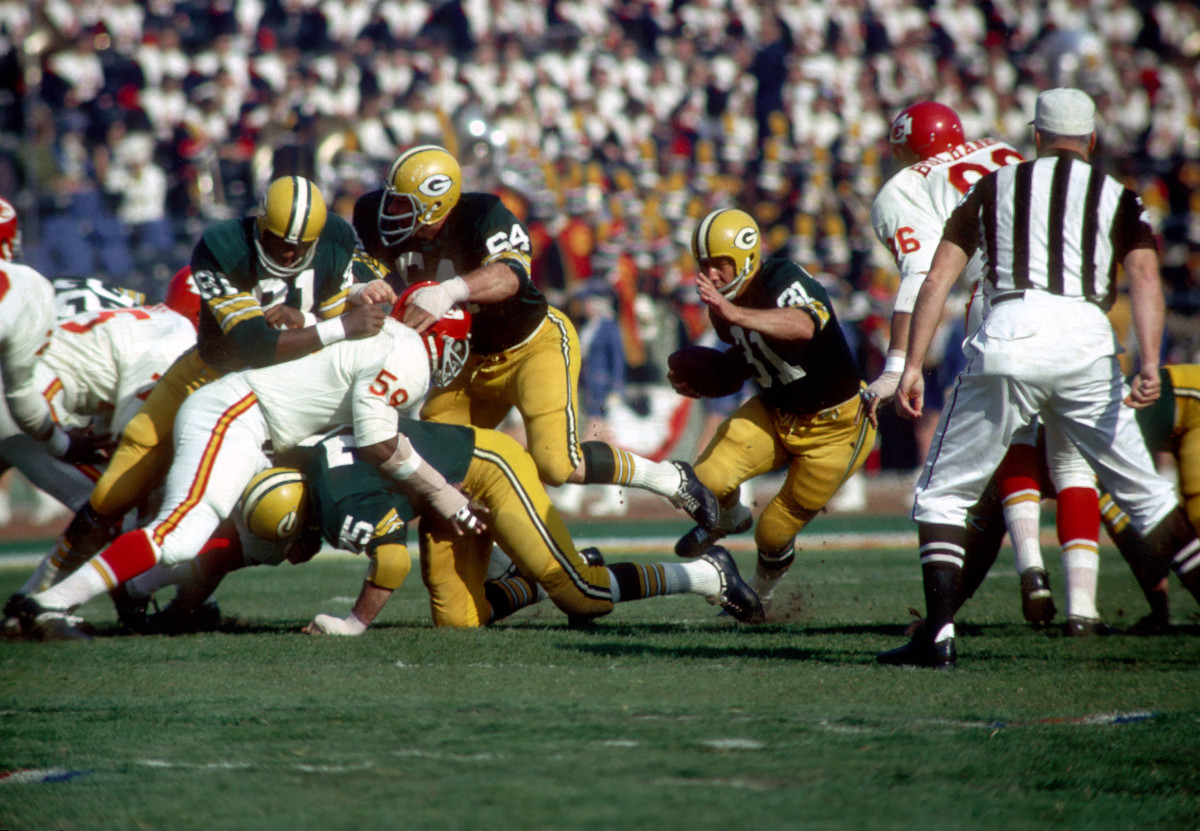
Green Bay Packers running back (31) JIM TAYLOR follows the blocks of (64) JERRY KRAMER (81) MARV FLEMING and (75) FOREST GREGG during Super Bowl I. He carried 17 times for 56 yards and a 14-yard touchdown that put the Packers in front 14-7. Credit: Tony Tomsic-USA TODAY NETWORK
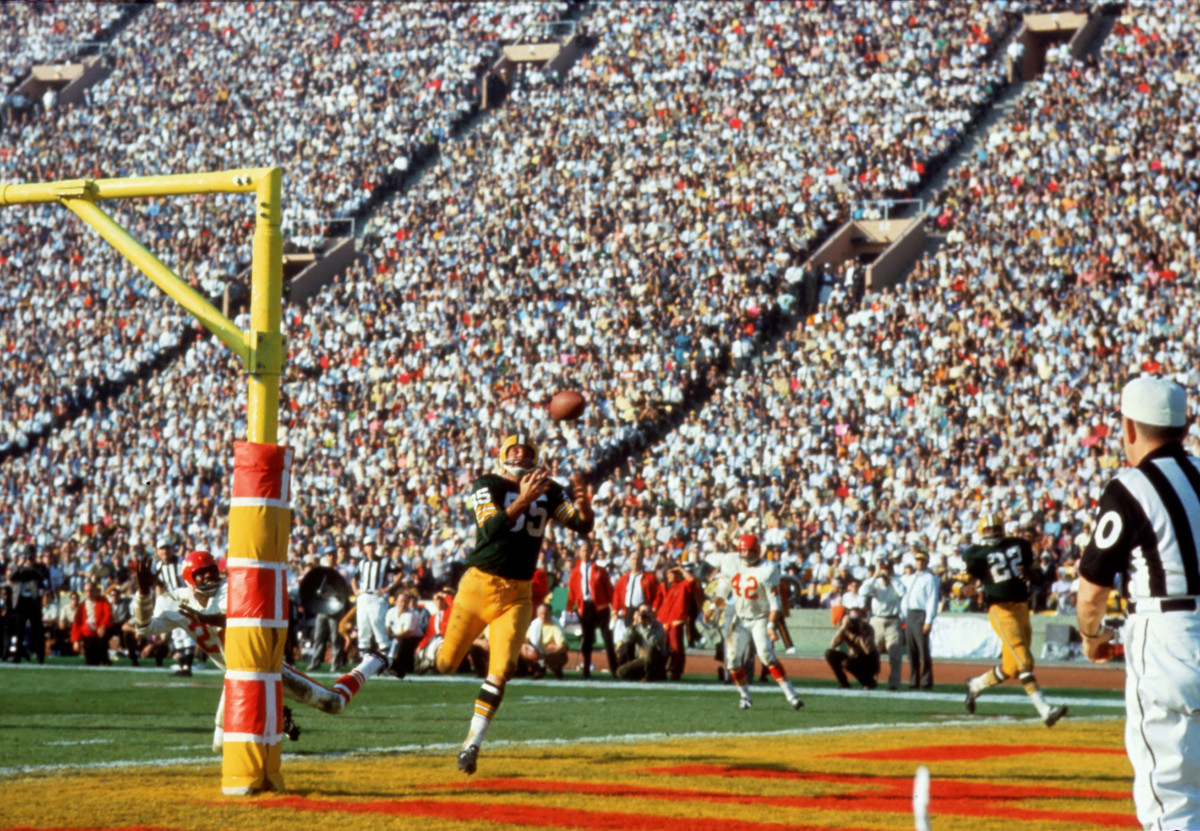
Green Bay Packers (85) Max McGee hauls in a juggling, 13-yard touchdown pass from Bart Starr during during the fourth quarter to make it 28-10. Tony Tomsic-USA TODAY NETWORK
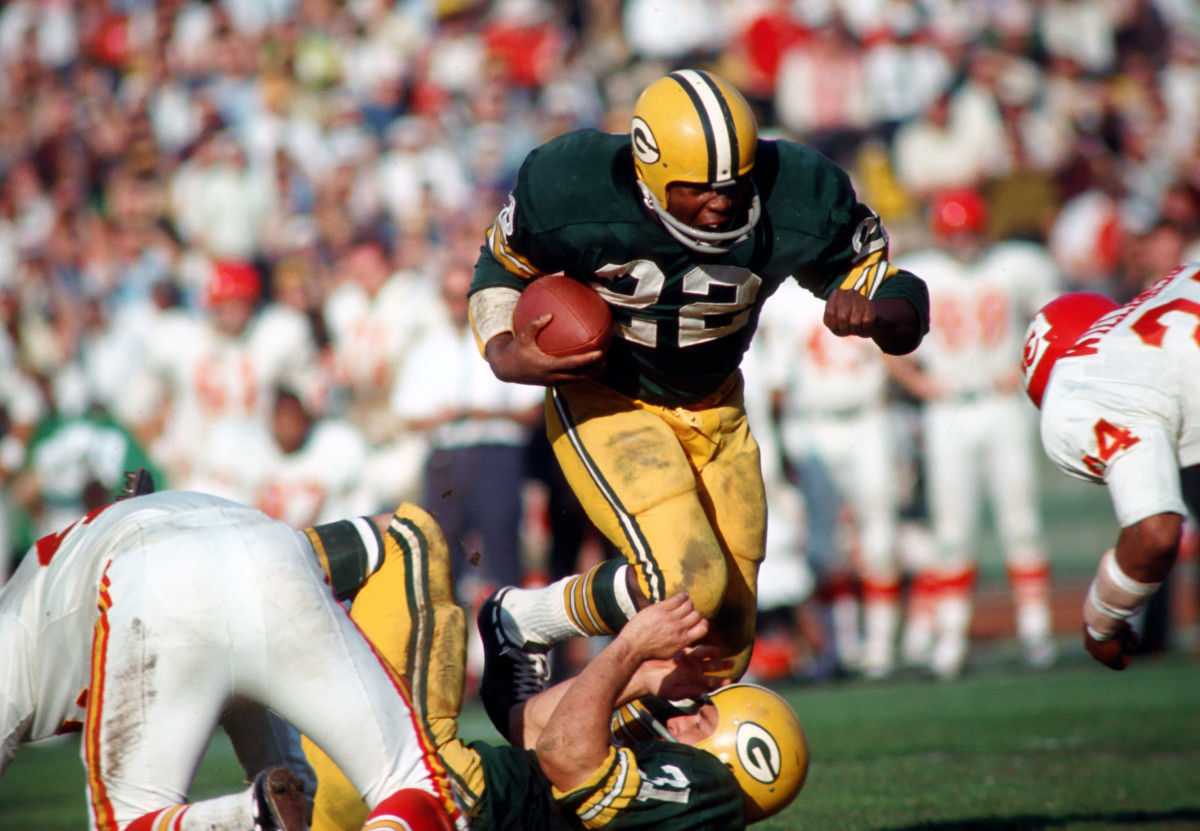
Green Bay Packers running back Elijah Pitts carried 11 times for 45 yards and two scores in Super Bowl I. Photo credit: Tony Tomsic-USA TODAY NETWORK
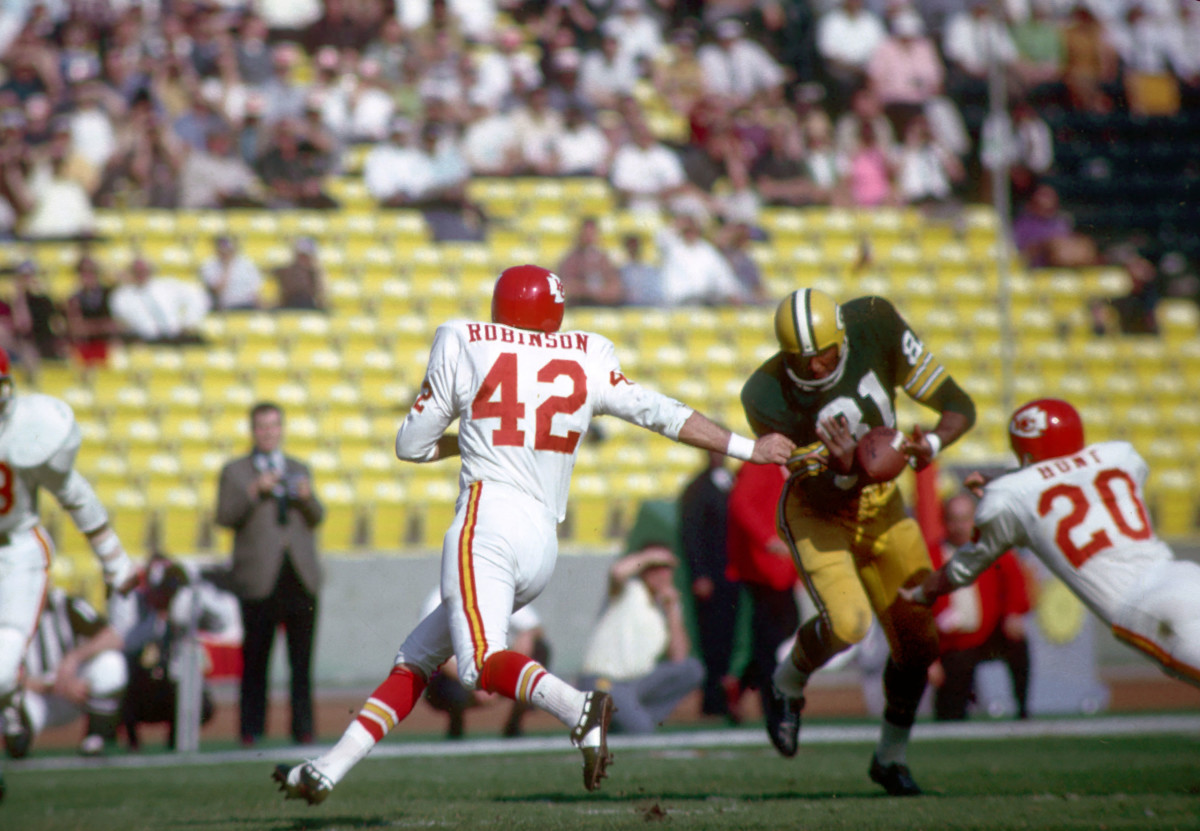
Green Bay Packers tight end (81) Marv Fleming in action during Super Bowl I. Photo credit: Tony Tomsic-USA TODAY NETWORK
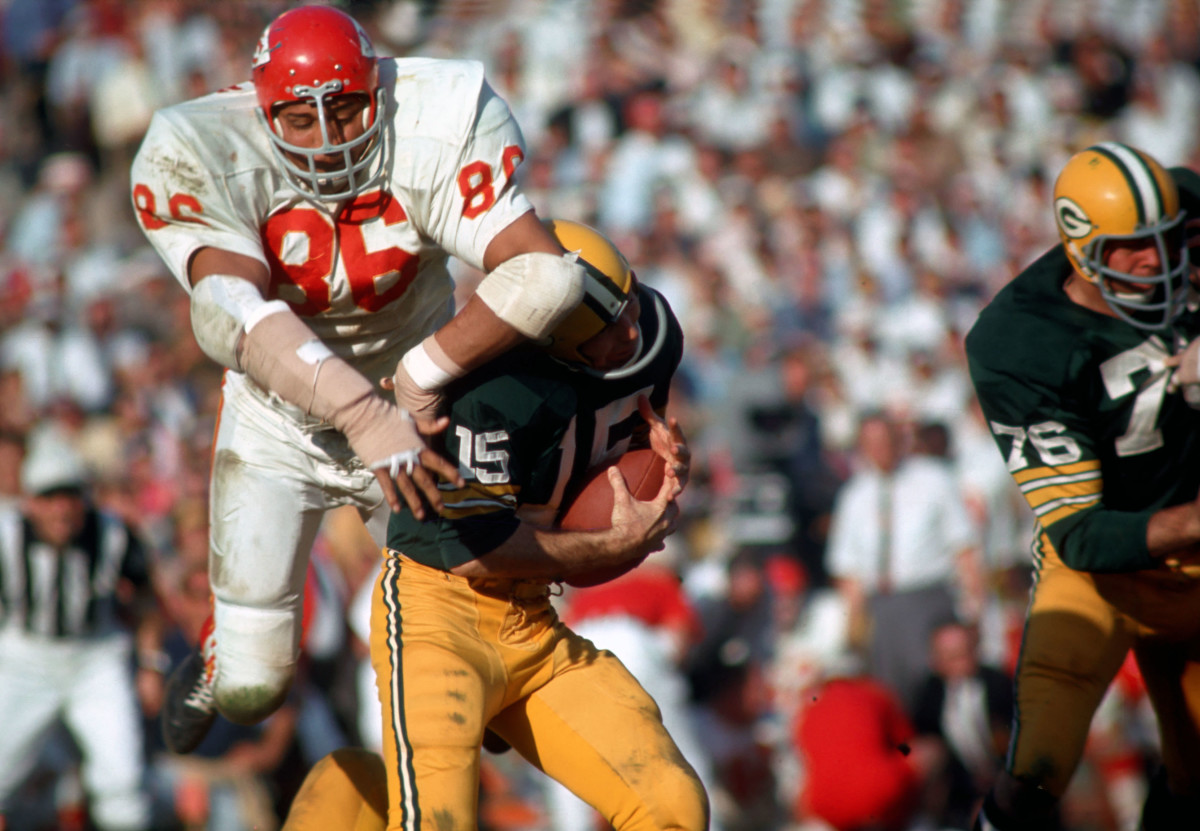
Green Bay Packers quarterback (15) BART STARR is hit by Kansas City Chiefs defensive end (86) BUCK BUCHANAN during Super Bowl I in the first meeting ever of the AFL and NFL Champions at Memorial Coliseum. Photo credit: Tony Tomsic-USA TODAY NETWORK
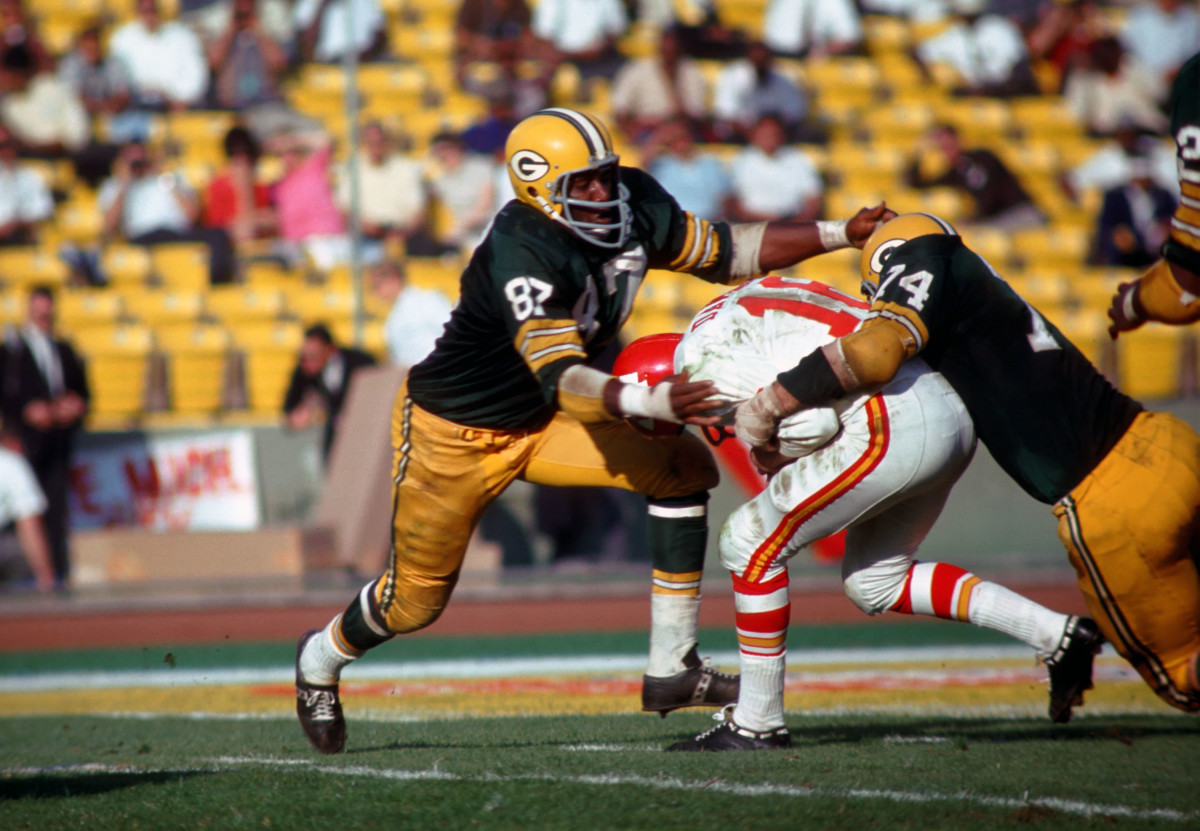
Green Bay Packers defensive linemen Willie Davis and Henry Jordan combine to sack Len Dawson. Photo Credit: Tony Tomsic-USA TODAY NETWORK
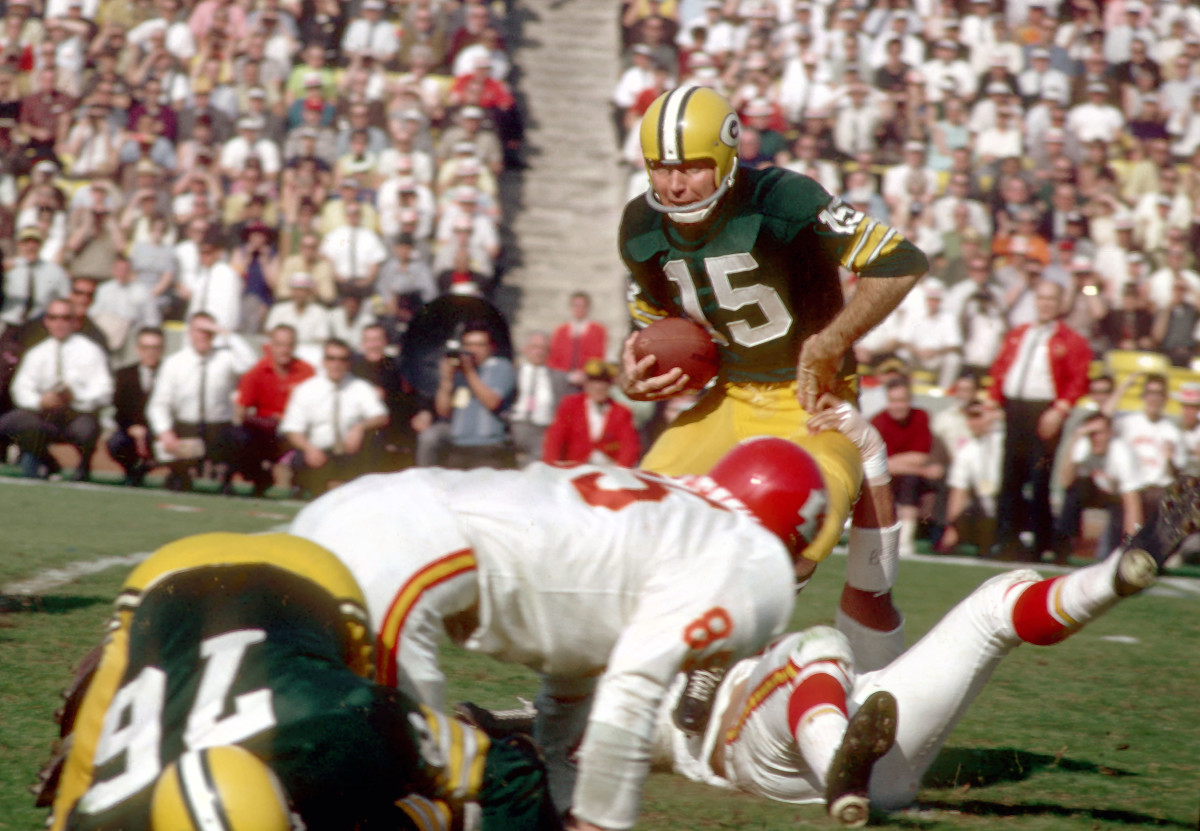
Green Bay Packers quarterback (15) Bart Starr in action against the Kansas City Chiefs during Super Bowl I in the first meeting of the AFL and NFL Champions at Memorial Coliseum. The Packers defeated the Chiefs 35-10. Tony Tomsic-USA TODAY NETWORK
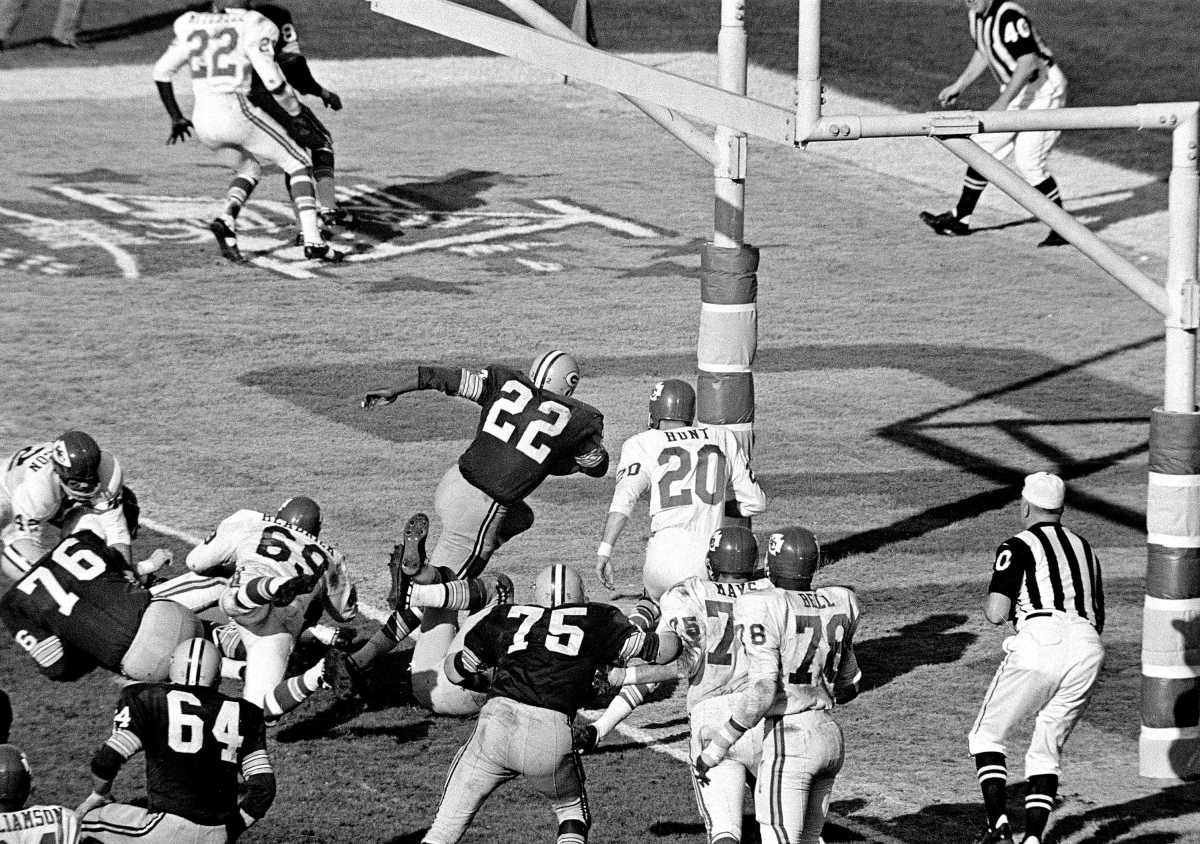
Green Bay's Elijah Pitts (22) charges into the end zone, eluding Bobby Hunt (20), during the first Super Bowl in Los Angeles. The 5-yard run followed Willie Wood's interception in the third quarter. Photo credit: USA TODAY Sports Images
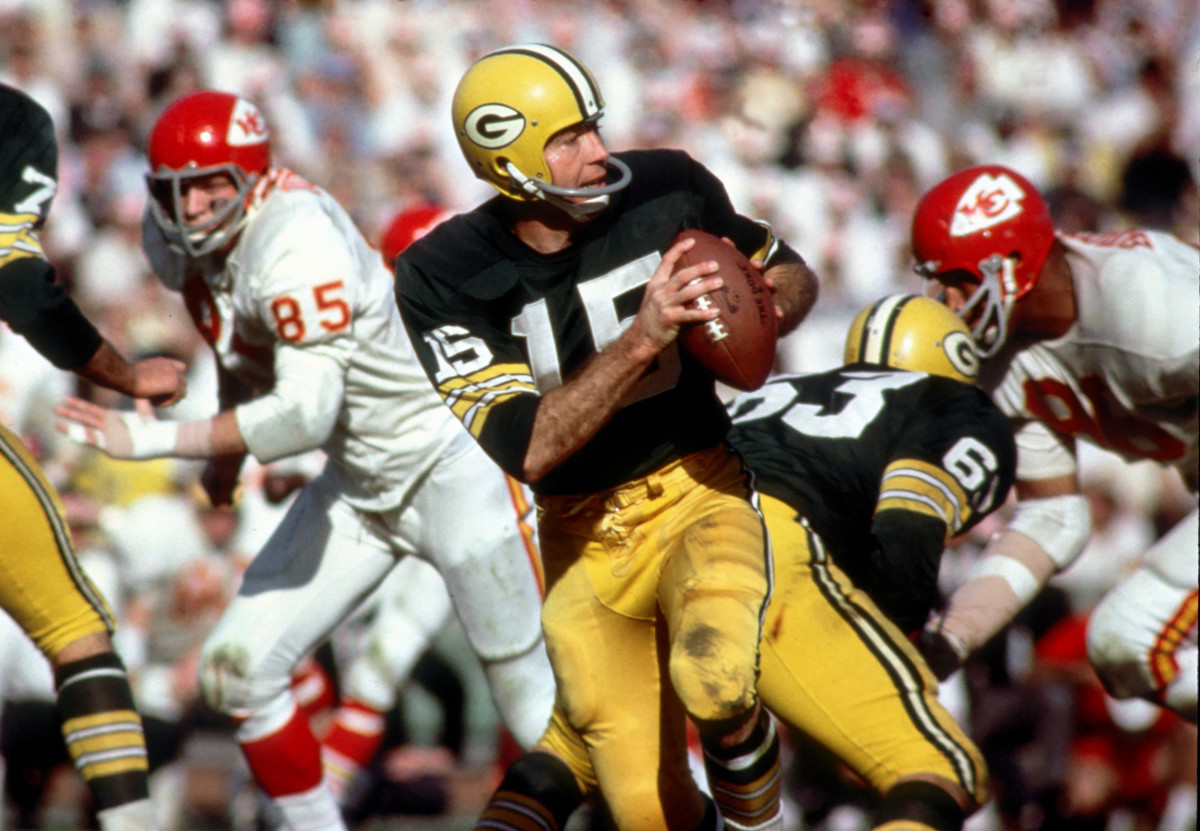
Bart Starr went 16-of-23 passing for 250 yards and two touchdowns to win MVP honors. Photo Credit: Tony Tomsic-USA TODAY NETWORK
